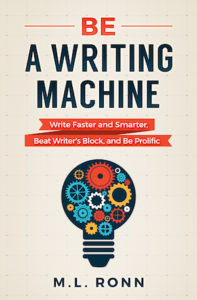I should hit my quota today. In the meantime, here’s a post from Indie Author Confidential Vol. 10 about people watching and how it can help you become a better writer.
LESSONS FROM STUDYING AN INTERPRETER
I had to attend an insurance training for my job. The training was at a hotel business conference center, and it was a nice way to get out of the house for a few days. I have attended these types of training many times, but this time was the first time one of the participants was hard of hearing and needed the assistance of an American Sign Language (ASL) interpreter. The interpreter sat in a chair in the front of the room. For eight hours, she translated every single thing that was said in the room, even questions from other participants. I cannot stress enough how difficult a skillset this is. It's one thing to listen to someone, pause, and interpret what they say. It's another thing entirely to interpret what they're saying in real-time. I still can't truly wrap my head around how one could do this. I suppose your brain has to be wired a certain way. Studying the interpreter was a great people-watching session. For starters, she wore all black. I've seen interpreters do this so that the participants have an easier time focusing on their face and hands. I have seen other interpreters who didn't wear black, though, so this doesn't appear to be a requirement for the profession. She kept one eye on the instructor at all times, alternating between facing him and the participant who needed her assistance. She was extremely expressive in how she moved her hands and face, almost as if she were talking to a child. Some words just can't be translated into sign language in any meaningful way. These terms include “commercial general liability”, “asbestos”, “nano materials”, and many more torturous insurance terms that were uttered repeatedly throughout the training. I felt bad for her until I realized that she would just mouth the term to the participant rather than sign it. During a break, the interpreter admitted to everyone that she had never read an insurance policy let alone attended an industry seminar. A few people's heads exploded. During breaks, she spoke almost exclusively to the participant she was working with. She continued to sign and have conversations with him even when she wasn't actively interpreting. I could tell they shared a special connection even though they had never met each other. Throughout the training, the other participants were just as captivated and intrigued by the interpreter as I was. I would frequently catch the other participants glancing over at the interpreter right after the instructor said a difficult word, just to see how she would interpret it. During breaks, there were many sidebar conversations about how great the first interpreter was. On the second day, the wonderful interpreter was replaced by another whose skills were just as adept, but she did not have the same connection with the participant. In fact, I rarely saw her speak to him during breaks. She did not socialize or mingle with the other participants, and when it was time to go home, she was the first one out of the room. In conclusion, I was glad for this people-watching experience. It taught me a lot about the interpreting profession and how I might write an interpreter into a story one day. It also illuminated more facets of that ever-morphing and infinite diamond that is human nature.

